To ensure gift delivery by 12/25, please place orders via UPS shipping no later than 12/17.
CloseFinding the Right Product for Learners with CVI
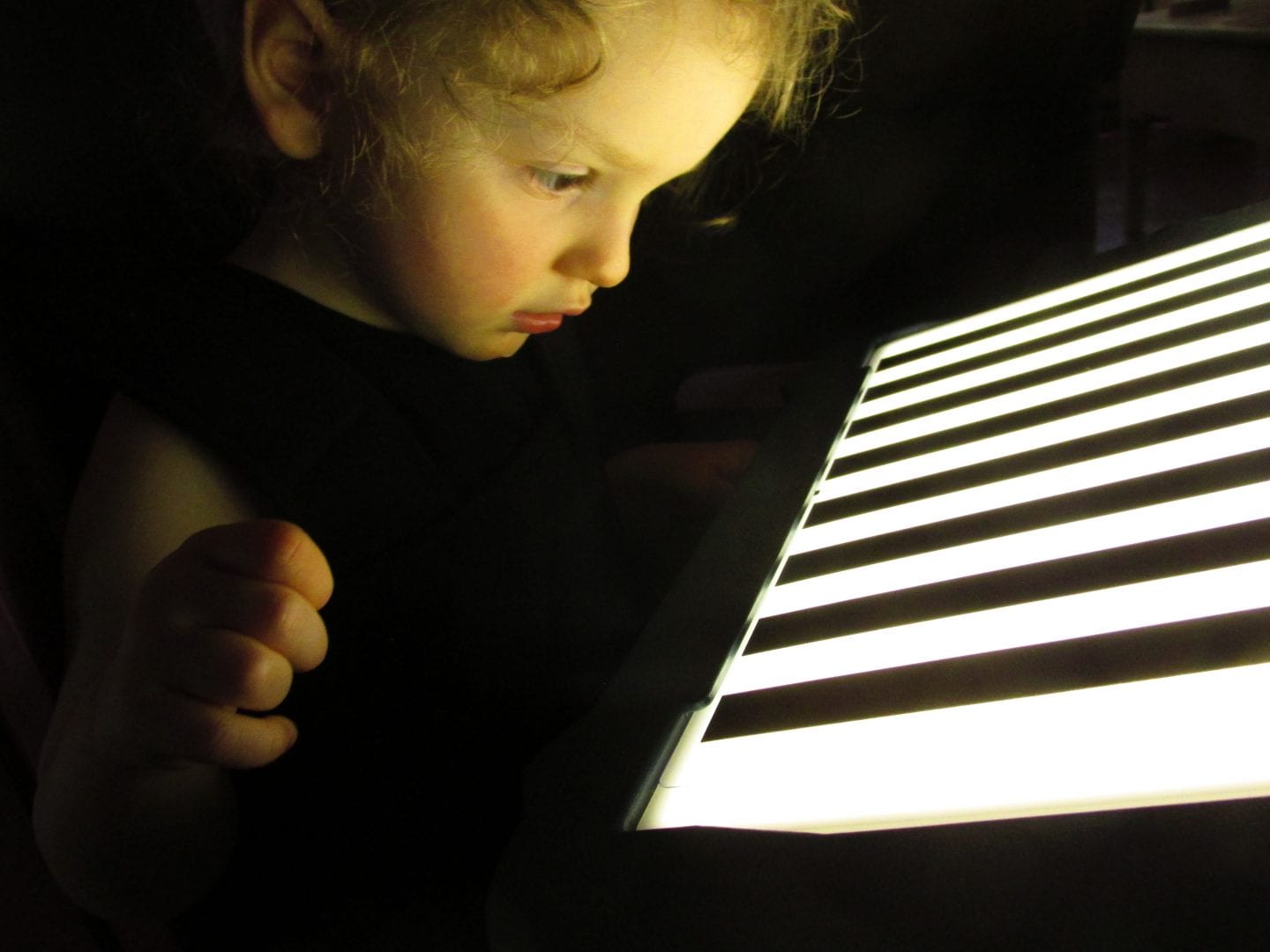
When our project leaders begin working on a product, the goal is to address the needs of many learners. Long before Cerebral/Cortical Visual Impairment (CVI) started to be more understood, we developed products that were and still are appropriate for students with CVI. Universal design is design and composition that can be accessed, understood, and used to the greatest extent possible by all people regardless of their age, size, ability, or disability. This is our goal when working to serve the needs of our consumers with no vision, low vision, and CVI vision.
There are specific APH products that are obviously developed for the learner with CVI because CVI is part of the name. Other products are very appropriate because they have the attributes of light, saturated colors, low visual clutter, movement, visual organization, etc. Assessment is key. Teachers need to know the strengths and challenges their students face before they can purchase products that are appropriate.
Teachers may not find all the keys to unlock learning on the first round of assessment, but as good educators, we use diagnostic teaching methods to monitor change, utilizing different strategies until the key clicks. We observe and adjust as the student learns to look, explores their world using vision and other senses, and then uses their vision to learn. We observe, we record what we have found, and then most importantly we share that information with the entire educational team.
Products for “learning to look”:
Swirly Mats CVI I, were developed with very low complexity, utilizing popular colors of red and yellow. Swirly Mat CVI II built upon the first set, adding complexity to the red and yellow mats while introducing a black/white mat, a reflective silver mat as well as providing a yellow, black and white tabletop mat for use when light is no longer needed to sustain visual attention.
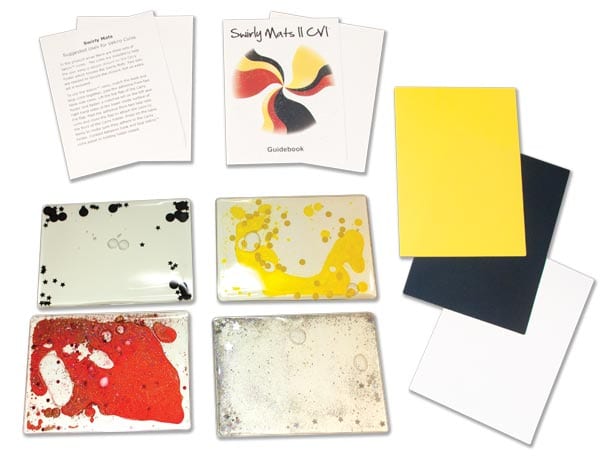 The Plexiglas Spinner combined with the customizable Spinner Overlays use light, movement and increasing levels of complexity to draw a learner’s visual attention as well as allowing observers to determine student preferences.
The Plexiglas Spinner combined with the customizable Spinner Overlays use light, movement and increasing levels of complexity to draw a learner’s visual attention as well as allowing observers to determine student preferences.
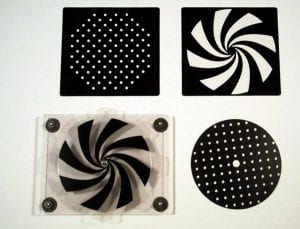
Products for exploring with other senses:
Spangle Tangle uses metallic reflective surface and movement to capture visual attention inviting the learner to participate in learning activities such as problem-solving, motor movements, social skills.
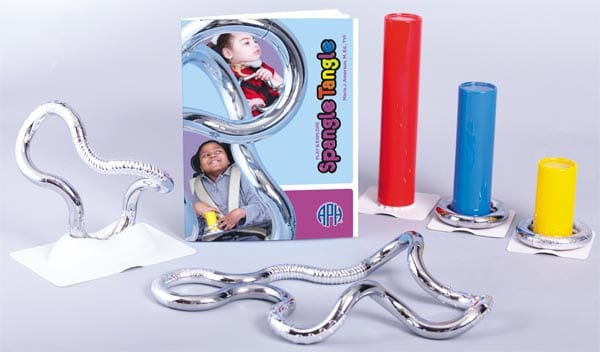
The Joy Player is a personal music player with 5 colorful activation buttons. The project leader included black caps to cover those buttons to remove visual complexity to meet the user’s needs.
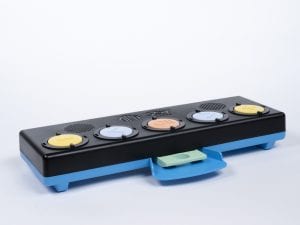
Products that utilize looking to learn:
The Mini-Lite Box Overlays allow the observer to use the support of light to isolate shapes by color and design to assist in shape identification, color matching, and counting activities. When light is no longer needed, white plastic mats are available to present the overlays.
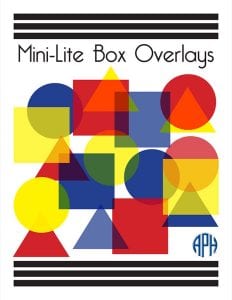
The Increasing Complexity Pegboard provides templates that allow the observer to determine if the learner needs one peg at a time for reaching or if two, or five, or an entire pegboard of pegs is appropriate. Is there a specific color that is always looked at or reached for first? Use that knowledge and apply it to other educational activities.
The Sense of Science: Animals uses the support of light and low complexity to introduce parts of animals individually, allowing the learner to put the animal together part by part to create the whole. Catalog headings are a way to organize the materials that are available, but creative teachers and caregivers can think beyond the labels, seeing the adjustable attributes of the products that allow them to be utilized for many students on their caseload.
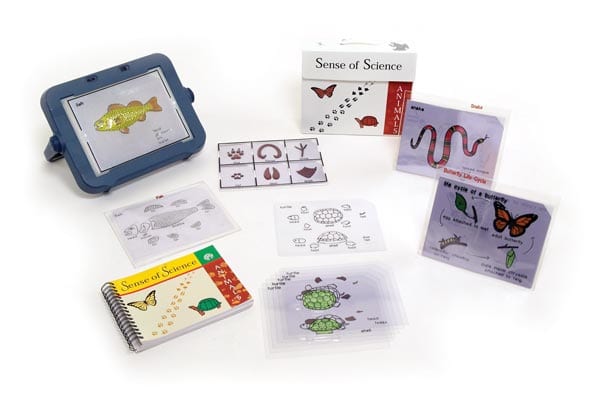
This year in the APH 2019-2020 catalog, we have added a CVI Icon to alert consumers which products they may want to consider for their learner. The Icon legend states “Products with this icon may be appropriate for learners diagnosed with CVI. Comprehensive assessment should determine which products are best matched to your learner’s needs.”
Stay tuned to your APH News as we take a look at more APH products that you may find useful for your students diagnosed with CVI. You can also find more products for all learners in our shop.
Susan Sullivan is the CVI Project Leader at APH.
